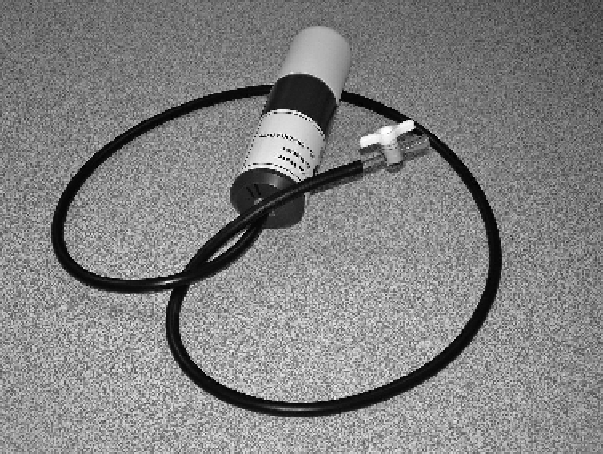Agriculture Reference
In-Depth Information
Figure 4.24
ASoluSAMPLER
TM
is a porous ceramic cylinder sealed to PVC tubing
withavacuumtapinline.Suctionsupto60to70kPaareappliedwithasyringe
attachedtotheopentube.(PhotocourtesyofDr.TapasBiswas,formerlyofthe
SouthAustralianResearchandDevelopmentInstitute,Adelaide,SouthAustralia.)
when water of higher salinity is used. Examples occur with some of the groundwa-
terusedintheBarossaValleyregion,SouthAustralia,theDarlingRiverwaterin
the Murray-Darling region, Australia, and the Tajo River water in the Castilla la
Mancharegion,Spain.Sometimesawhitesaltencrustationcanbeseenonthesoil
surface, as shown in figure 4.25.
Increasing soil salinity predisposes to a soil becoming sodic, as defined in
box2.4,chapter2.Saline-sodicsoilsarepotentiallyunstablewhenrainfallor
irrigation water of low salinity gradually leaches out the resident salts. The low-
ered salt concentration, coupled with a high exchangeable sodium percentage,
causesclaytodispersewithaconsequentdestabilizationofsoilstructure,as
explained in box 4.3. The first sign of structural damage is a decrease in the soil's
permeability(i.e.,itshydraulicconductivity).hisefectismostnoticeableina
clay subsoil in which dispersed clay can block soil pores, reducing permeability
toaverylowvalue.Waterloggingislikelytoensue.
SodicsoilsshouldbetreatedwithgypsumtoreplaceNa
+
ions with Ca
2+
and
so promote clay flocculation and stable aggregation. Topsoil sodicity is easy to
treatwithsurfaceapplicationsofgypsum(1to2t/ha/year)fortwotothreeyears,
butsubsoilsodicitymayrequiredeeprippingandconcurrentgypsumapplication
(see“CultivationandRipping,”chapter2).

